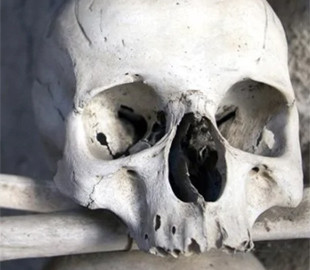
Today, when the world is repeatedly shaken by various cataclysms, the question of the durability of housing is more acute than ever. Trying to solve this problem, scientists created a unique cement based on the anatomy of our bones.
Researchers at Princeton University have developed a new cement-based material inspired by the architecture of human bone, particularly the tough outer layer known as cortical bone. It is reported that this innovative material is 5.6 times more resistant to damage compared to conventional cement materials, which indicates a significant progress in the field of construction materials that may begin to be used in the future, writes ScienceDaily.
The unique design allows the new material to resist cracking and avoid the sudden, catastrophic failure that is usually typical of fragile materials used in construction. The research, led by Reza Moini, an associate professor in the Department of Civil Engineering and Environmental Management, was published in the journal Advanced Materials. It describes in detail how the incorporation of tubular architecture into cement paste significantly increases its resistance to crack propagation. This approach not only prevents sudden destruction, but also improves the ability of the material to gradually deform under loads, which is very important for the durability of the building.
Traditional cement-based materials often fail suddenly due to their brittleness, which creates problems in construction, especially in load-bearing structures. In their solution, the Princeton team uses principles of fracture mechanics and statistical mechanics to design an internal architecture that balances stress and mechanical response at the crack front. This design is inspired by human cortical bone, which uses elliptical tubular structures called osteons to avoid cracks, preventing sudden fracture and increasing overall strength.
200% Deposit Bonus up to €3,000 180% First Deposit Bonus up to $20,000Cortical bone can be almost as strong as steel. Although it is much lighter, its compressive strength is about 170 MPa (megapascals), which is comparable to the compressive strength of concrete and some types of stainless steel. This amazing strength, combined with a light structure, allows bones to support the weight of our bodies and withstand significant physical stress.
In the newly developed material, cylindrical and elliptical tubes are embedded in the cement paste, interacting in a controlled manner with propagating cracks. Moiney explained that despite initial expectations that such hollow structures might weaken the material, careful engineering of the geometry, size, shape and orientation of the tubes allows for increased crack resistance without compromising other properties. This step-strengthening mechanism effectively dissipates energy at each crack-tube interaction, significantly slowing crack propagation and preventing catastrophic failure.
The Princeton team's approach differs from traditional methods, which often rely on adding fibers or plastics to strengthen cement-based materials. Instead, they focused on a geometric design to increase strength, demonstrating that changing the internal structure of the material can achieve remarkable results. In addition, the researchers presented a new method for quantifying the degree of disorder in the architecture of the material, which gives a more accurate picture of its properties and allows for further optimization.
In the future, the research group is studying the possibility of using advanced manufacturing technologies, such as and additive manufacturing, to further improve these tubular structures and potentially scale them up for use in large-scale civil infrastructure projects.

